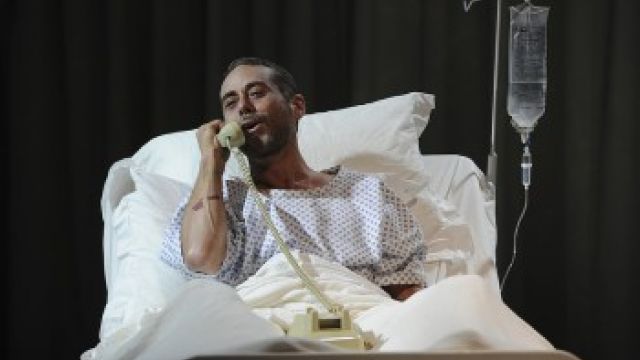Angels in America
Tony Kushner’s vast seven-hour, two-part epic about personal guilt and public despair in Reagan’s America shows not a spot of dust in this Belvoir restaging. Leaving aside its delightful religious and historical apparitions, Angels in America interweaves three stories set in 1985. With his body marked with the first sarcomas of AIDS but fated to be the prophet of this epic, Prior begs his anxious Jewish lover, Louis, not to desert him. Meanwhile a young Republican Mormon battles furiously to suppress his homosexuality as his young wife drowns herself in Valium. The third story shows Senator McCarthy’s once infamous lawyer Roy Cohn now ravaged by AIDS but clinging to his corrupt power and pretence of heterosexuality. He might fuck with men, he shouts at his doctor, but how could he be a homosexual? They are “men who know nobody and who nobody knows, men who have zero clout.”

With American theatre traditionally focusing on the personal and domestic – and early gay theatre even more so – Kushner’s genius was to intersect these stories about gay power and experience and project them across a worldly canvas of other sweeping themes. AIDS, Mormonism, Judaism, tolerance, environmental destruction, corruption and political estrangement all feature in this searing and yet comic hallucination on the end of the millennium. And in Eamon Flack’s fine actor-focused, ensemble production, these themes dust off very well in the new century.
Marcus Graham, is demonically convincing, even sympathetic, as Roy Cohn. Young Ashley Zukerman and Amber McMahon are agonisingly true as the estranged Mormon couple. Mitchell Butel conjures all the Jewish doubt, guilt and verbosity of Louis while Luke Mullins is riveting as Prior, ethereal thin but with a deadly line in camp drollery. He spars well with Deobia Oparei as the nurse, who repeats the role he played in the Sydney Theatre Company premiere in 1993. Robyn Nevin plays a virtuosic range of vital smaller roles, including the laconic ghost of Ethel Rosenberg who returns to haunt the dying Cohn.
As the evening wears on, Part Two of Angels, Perestroika, introduces even more hallucinatory elements and further ensemble challenges to maintain pace, rhythm and urgency. It is for now less cohesive than Part One, Millennium Approaches, and the production could bring more invention to the hallucinations. Michael Hankin's beige tiled set allows for lots of bodily fluids and is wonderfully flexible as some sort of waiting room antechamber to the world. This is at end an impressive and emotional revival of one of the most powerful plays of the late 20th Century. See it – and both parts!
Martin Portus
Images: (top) Marcus Graham and (lower) Luke Mullins and Paula Arundell. Photographer: Heidrun Lohr.
Subscribe to our E-Newsletter, buy our latest print edition or find a Performing Arts book at Book Nook.

